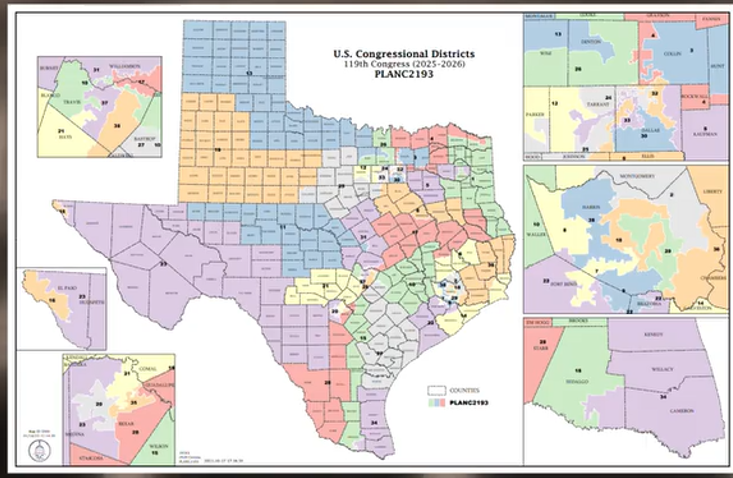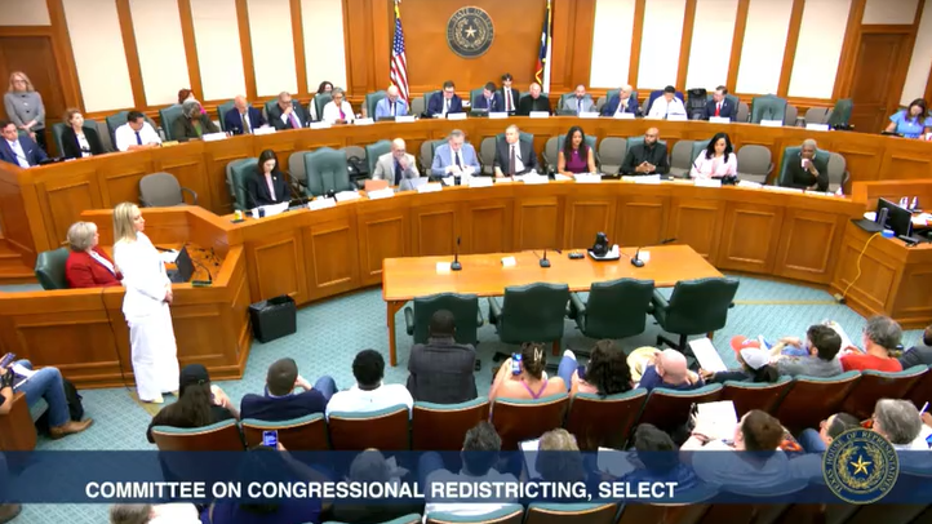The recent developments in Texas’s congressional redistricting have sparked significant political discourse, particularly regarding the implications for the upcoming elections. A Texas House panel has advanced a new congressional map that aims to add five new Republican districts, a move that has drawn both support and criticism.

Overview of the New Congressional Map
The proposed map, which was approved by the Texas House redistricting committee on a party-line vote of 12 to 6, is designed to reshape the electoral landscape in favor of Republican candidates. This initiative is seen as a strategic effort to maintain the GOP’s majority in the U.S. House during the 2026 midterms. The map’s proponents argue that it addresses concerns about the current districts being unconstitutional and racially gerrymandered, a claim that has been met with skepticism from Democrats and civil rights advocates.

Key Features of the Map
-
Targeted Districts: The new map specifically aims to make five Democratic congressional seats more favorable to Republicans. This includes packing more Democratic voters into certain districts to dilute their influence in surrounding areas.
-
Political Motivation: GOP lawmakers have openly stated that the redistricting is intended to advantage Republican candidates, marking a departure from previous justifications that emphasized legal compliance.
-
Demographic Considerations: The map relies on 2020 census data, which may not accurately reflect the rapidly changing demographics of Texas. This raises questions about the long-term viability of the proposed changes.
Reactions and Controversies
The redistricting plan has faced significant backlash from Democrats, who argue that it will suppress the votes of people of color. They contend that the map is a blatant attempt to undermine electoral fairness and has been characterized as a “Trump power grab” by some political commentators.
Legal Challenges
Historically, Texas’s congressional maps have faced legal scrutiny, with courts finding violations of the Voting Rights Act in previous redistricting efforts. The current map is expected to be challenged in court, and its future remains uncertain as legal battles unfold.
Implications for Future Elections
The implications of this redistricting are profound:
-
Electoral Dynamics: If the map is implemented, it could significantly alter the competitive landscape of Texas’s congressional races, potentially leading to increased Republican representation.
-
Response from Other States: The aggressive redistricting strategy in Texas may prompt Democratic-led states to consider similar measures to counteract Republican advantages, leading to a nationwide reevaluation of electoral maps.
Conclusion
The new congressional map in Texas represents a critical juncture in the state’s political landscape. As the situation develops, it will be essential to monitor both the legal challenges and the broader implications for electoral fairness and representation in the upcoming elections. The outcome of this redistricting effort could set a precedent for how states approach congressional mapping in the future.


